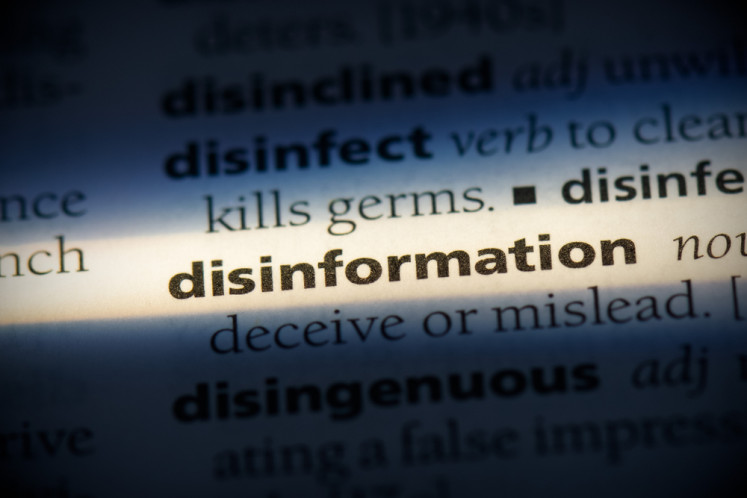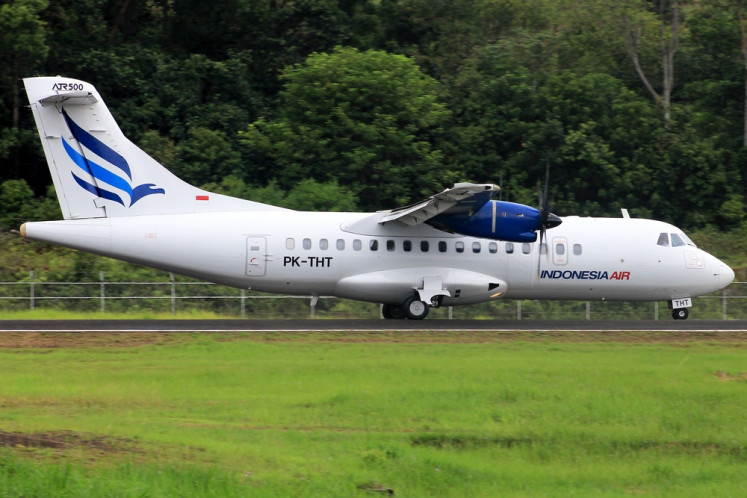Popular Reads
Top Results
Can't find what you're looking for?
View all search resultsPopular Reads
Top Results
Can't find what you're looking for?
View all search resultsInsight: Determine gold output ahead of Freeport deal
One main issue is still to be resolved in the hard bargaining by Freeport Indonesia regarding its contract of work
Change text size
Gift Premium Articles
to Anyone
O
ne main issue is still to be resolved in the hard bargaining by Freeport Indonesia regarding its contract of work. Agreements have already been reached to enhance share divestment, increase the royalties and build a new smelter, despite the temporary delay over the location. A deadline is approaching and anxious hands on both sides of the table are keen to conclude a deal.
Freeport wants a new contract of work now, rather than in 2019 when it was due to be negotiated. Investment security for an expansion of mining operations is given as the reason. The deal will cover mining operations up to 2055. Although described as a 'victory for Indonesia', the main issue is still absent from discussion so there is an urgent need to review what Freeport is actually doing.
PT Freeport has said it plans to spend about US$17 billion expanding underground mining at Grasberg in the province of Papua before 2021. Annual turnover is now calculated in tens of billions of dollars, and Freeport's contribution for tax revenue for the government of Indonesia is regarded as massive and most welcome.
Already Grasberg is a vast underground mining complex spreading in different directions. At least two of these huge underground operations are devoted entirely to gold mining. Expanding these and starting others is the main aim of the proposed development. Copper is not the main goal yet many descriptions of the Freeport mine still state it is 'a copper mine with some gold'.
The Grasberg is unprecedented ' the world's largest primary deposit of gold. It is so large that Freeport have relinquished other sites in Papua where there were other significant gold deposits. A few years after the Grasberg came into production in 1989, one Freeport vice president told me its potential looked so large it could involve 200 years of mining.
The Grasberg was first discovered in 1936 by the Dutch geologist, Jean Jacques Dozy. He was the person who gave it the name, Grasberg, at the same time as he named the Ertsberg. They were two kilometers apart, at either end of a once-peaceful meadow just below the snow and glaciers in the Papuan highlands. After Freeport used helicopters to test-drill both sites in the early 1960s, Grasberg lay waiting to be mined. A mountainous outcrop of copper and gold before mining began in 1972, the Ertsberg was transformed into a gigantic hole in the ground. By 1987, when Freeport was ready to start mining the Grasberg, its potential was 'discovered' and mining began two years later. The deal which Freeport concluded at that time did not benefit Indonesia as it should have.
The main issue is gold. This vast primary deposit was never mentioned in the 1960s during the anti colonial campaign to reclaim Netherlands New Guinea as part of Indonesia. Neither then president Sukarno nor Kennedy was aware of the gold deposit in the territory or how it was influencing political decisions behind the scenes. However, former Dutch foreign minister, Joseph Luns, whom I interviewed July 15 on 1982, when he was NATO secretary-general, was well aware of the gold in New Guinea. He stated that he had proposed a joint-operation with the Americans (in those days, the Rockefeller company was known as Freeport Sulphur) but the answer was negative.
American determination to claim sole access to the gold took effect when Soeharto came to power. In the same way that I gained a better understanding by speaking with Jean Jacques Dozy (in his home in the Netherlands) I would suggest that Indonesian government officials involved in current negotiations ask Freeport to clarify certain points.
For example, during 15 years of mining, the Ertsberg gold concentration was stated to be around 2 grams/ton yet the concentration in official Dutch reports and confirmed during the interview with Dozy was 15 grams/ton. This discrepancy needs to be included in current negotiations between Freeport and the Indonesian government. The Ertsberg and the Grasberg, it should be stated, have geologically developed from the same subterranean source.
An article in Indonesian media last week suggested the construction of a local smelter was one way to detect the difference between official and unofficial Freeport gold production. Those involved in negotiating on behalf of the Indonesian government should ascertain actual current gold output from the Grasberg. The gold concentration included in the copper-slurry, which is then refined in a smelter (in Indonesia or overseas), will show approximately the same level that has been stated year after year. This is because gold is removed before the slurry is pumped down the pipeline to the coast for export.
The gold that is extracted is then converted into small ingots. A Timika-based Freeport security official told me that the gold, in this form, is transported by vehicle to the Timika airport where it is loaded into a private plane then flown overseas. This occurred during the lifetime of the Ertsberg mine and has continued with the Grasberg. Government requirements for a smelter will bring some financial benefit, of course, but not address the main issue, so the hard bargaining remains to be done.
___________________
The writer teaches Indonesian history at the University of the Sunshine Coast, Brisbane. He wrote The Incubus of Intervention: Conflicting Indonesia Strategies of John F. Kennedy and Allen Dulles.










